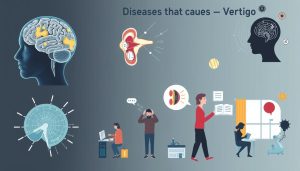Understanding the diabetes mellitus 2 ICD 10 coding system is key for healthcare workers. It helps with accurate diagnosis, smooth billing, and better patient care. This guide uses American Diabetes Association guidelines and CMS protocols. It also adds insights from experts.
As we explore diabetes coding, this guide is your guide. It offers essential tips and a clear path to better coding practices.
Medical coding is always changing, and keeping up is tough. The diabetes mellitus type 2 diagnosis code is more than just a number. It opens up a world of patient data, treatment plans, and payment information.
By following the latest coding rules, you can avoid mistakes. This improves diabetic care and management.
Understanding the ICD-10 Coding System for Diabetes Mellitus Type 2
The International Classification of Diseases, Tenth Revision (ICD-10), is a key tool in healthcare. It helps code diseases, including diabetes mellitus. For those managing type 2 diabetes, knowing the ICD-10 code is vital for accurate records and billing.
The Structure of ICD-10 Codes
ICD-10 codes use letters and numbers to detail diagnoses. Each code starts with a letter, followed by two digits and a decimal point. This makes it easier to categorize and index diagnoses.
Categories of Diabetes in ICD-10
Diabetes in ICD-10 is divided into several categories. These include Type 1 Diabetes (E10), Type 2 Diabetes Mellitus (E11), Gestational Diabetes (O24), and other diabetes conditions. Each category helps in specifying the exact nature of the disease, improving treatment plans.
The ICD-10 code for type 2 diabetes mellitus, E11, needs additional codes for complications. These include kidney, ocular, and neurological complications. Understanding these subdivisions is key to documenting a patient’s health fully.
Using ICD-10 codes accurately helps in managing patient care, billing, and research. This improves the quality of care for those with diabetes mellitus type 2.
Identifying the Correct Diabetes Mellitus 2 ICD 10 Code
Choosing the right ICD-10 code for diabetes type 2 is key for doctors. It helps manage patient care and deal with insurance claims. Coding groups like AAPC stress the need for accurate coding for better patient care.
The diabetes type 2 ICD 10 code is more than just a formality. It’s a vital part of a patient’s treatment plan. It shows if there are other health issues that need attention.
Getting the ICD-10 code for diabetes type 2 right is important. It helps track health trends and shapes treatment plans. This is even more critical now that we’ve moved from ICD-9 to ICD-10. ICD-10 offers more detail, just like other health conditions.
- Ensuring code accuracy when documenting in medical records.
- Reviewing patient history comprehensively to capture all relevant complications associated with diabetes type 2.
- Continual education and updating of coding practices as new guidelines and updates are released.
Healthcare providers need to focus on accurate diabetes type 2 ICD 10 coding. It’s not just for billing. It’s essential for top-notch patient care. Using real-world examples can help coders and healthcare teams improve their coding skills.
Key Factors That Influence the Type 2 Diabetes ICD 10 Coding
Accurate coding for type 2 diabetes mellitus ICD-10 is key for patient care and healthcare reporting. Several important factors play a big role in this process. These factors are critical when the patient has complications that change the coding.
Complications Influencing Diabetes Coding
Complications like neuropathy, retinopathy, and nephropathy affect the coding for type 2 diabetes mellitus ICD-10. These conditions need more detailed coding to fully capture the patient’s health. This leads to specific codes for each complication, showing the complexity of the patient’s condition.
For example, diabetic retinopathy needs a code that shows it’s due to type 2 diabetes. It also needs to show its severity and any surgeries. Diabetic nephropathy must be coded with the stage of kidney disease. This ensures the right treatment and payment plans are followed.
Documentation Requirements for Accurate Coding
Good documentation is essential for accurate type 2 diabetes mellitus ICD-10 coding. Doctors and healthcare providers must write detailed medical notes. These notes should diagnose diabetes and list all related complications and other health issues.
The American Health Information Management Association (AHIMA) recommends clear records. Each record should show how diabetes relates to other health problems. This approach improves medical records, billing, and patient care.
| Complication | Specific ICD-10 Code | Documentation Tips |
|---|---|---|
| Diabetic Neuropathy | E11.40 | Detail type and location of neuropathy, any measures of severity, and treatment actions. |
| Diabetic Retinopathy | E11.319 | Specify severity, whether proliferative or non-proliferative, and any therapeutic procedures. |
| Diabetic Nephropathy | E11.21 | Report stage of kidney disease and any renal function tests or treatments being administered. |
Understanding these details in documentation and coding is important. It helps manage the complexities of type 2 diabetes mellitus ICD-10 coding. With accurate and detailed records, healthcare providers can better monitor and treat a patient’s diabetes.
Navigating the ICD-10 Code for Type 2 Diabetes With Complications
Healthcare professionals need to know how to use the diabetes mellitus 2 ICD 10 code, even when complications come up. The diabetes mellitus type 2 diagnosis code changes based on the complications. This affects treatment and how insurance works.
Here’s a guide for common type 2 diabetes complications and their ICD-10 codes. It helps doctors pick the right codes for care and billing.
| Complication | ICD-10 Code | Description |
|---|---|---|
| Neuropathy | E11.40 | Diabetes with neurological complications |
| Nephropathy | E11.21 | Diabetes with kidney complications |
| Retinopathy | E11.311 | Diabetes with ophthalmic complications |
| Cardiovascular Disease | E11.51 | Diabetes with cardiovascular complications |
| Peripheral Arterial Disease | E11.51 | Diabetes with peripheral circulatory complications |
Each diabetes mellitus type 2 diagnosis code in the table helps share information in healthcare. It also makes sure insurance reports are accurate. This is key for managing the needs of patients with type 2 diabetes and its complications.
Type 2 Diabetes Mellitus ICD-10 Coding and Risk Adjustment
Accurate coding in the ICD-10 system is key for managing type 2 diabetes mellitus. It affects how healthcare is planned and paid for. Using the ICD-10 code for type 2 diabetes mellitus correctly helps improve patient care.
Impact of Diabetes Coding on Risk Scores
For those in value-based care, precise ICD-10 codes for type 2 diabetes matter a lot. These codes help predict health outcomes and plan resources. Accurate coding means better support and care from health plans.
Improving Patient Outcomes Through Accurate Coding
Research shows better patient results with accurate coding for chronic diseases like type 2 diabetes. Accurate coding means treatments are more focused on what each patient needs. This is thanks to the type 2 diabetes ICD 10 system.
| Feature | Impact of Accurate Coding | Impact of Inaccurate Coding |
|---|---|---|
| Risk Adjustment Accuracy | Improved resource allocation | Potential resource wastage |
| Treatment Personalization | Enhanced patient care | Generic care plans leading to suboptimal outcomes |
| Patient Satisfaction | Higher satisfaction due to tailored care | Lower satisfaction from perceived negligence |
Comorbid Conditions and their Influence on Diabetes Type 2 ICD 10 Codes
Healthcare professionals must deal with many comorbid conditions when managing diabetes type 2 ICD 10 codes. These include hypertension and dyslipidemia. It’s key to understand these conditions to ensure accurate medical records and treatment plans.
Recording multiple chronic conditions requires a deep understanding. The ICD-10 code for diabetes type 2 can change based on these complications. This is important for customizing patient care and finding effective treatments.
For a better grasp, studying related conditions like kidney diseases is helpful. Resources like the National Institute of Diabetes and Digestive and Kidney Diseases (NIDDK) provide valuable information.
| Condition | Impact on Coding | Examples of Related Codes |
|---|---|---|
| Hypertension | Requires additional codes | I10, I11 |
| Dyslipidemia | Adjust code to reflect comorbidity | E78 |
| Cardiovascular Diseases | May alter risk adjustment scoring | I20-I25 |
It’s vital to know how to include comorbid conditions in diabetes type 2 ICD 10 coding. This gives a complete view of a patient’s health. It’s not just for treatment but also for billing and insurance purposes.
Diabetes Mellitus Type 2 Diagnosis Code and Patient Education
Telling patients about their type 2 diabetes mellitus ICD-10 code is key to managing their health. Doctors must treat patients and teach them about their diagnosis code. This code is important for health insurance and ongoing care.
Teaching Patients About their ICD-10 Codes
Patients with diabetes mellitus 2 icd 10 often struggle to understand their codes. Educational sessions help explain ICD-10 codes and their role in treatment. Diabetes groups provide materials that make this information easy to understand.
This education helps patients talk better with doctors and insurers. It gives them power in their health care.
ICD-10 Coding and Insurance Claims: What Patients Need to Know
Knowing how type 2 diabetes mellitus ICD-10 codes affect insurance is vital for patients. This knowledge helps them deal with the claims process better. Accurate coding ensures their claims match their health needs.
Insurance experts say patients should learn about ICD-10. This helps avoid problems and delays in claims. It ensures they get the medical care they need on time.
In summary, talking about diabetes mellitus 2 icd 10 codes helps patients understand their medical bills and insurance. It also lets them take a more active role in managing their diabetes. Through education, patients learn about the coding system that affects their health care.
Best Practices for Documenting Type 2 Diabetes in Medical Records
Keeping medical records accurate is key for managing diabetes mellitus type 2 well. It helps doctors give care that fits each patient’s needs. This way, health outcomes can be better. Also, it makes it easier to move between doctors and helps with coding like diabetes mellitus 2 icd 10 and diabetes mellitus type 2 diagnosis code.
Key Documentation Practices: Good medical records start with a full patient history, symptoms, treatments, and how well they work. Adding Clinical Documentation Improvement (CDI) programs makes records more accurate. This is important for correct diabetes mellitus 2 icd 10 coding.
- Write down every visit with details, including diabetes symptoms.
- Include any extra health issues and their codes.
- Make sure treatment plans are clear, including medicines and how well the patient follows them.
- Use the same words for health terms to keep records easy to understand.
Impact on ICD-10 Coding Accuracy: Accurate records help pick the right diabetes mellitus type 2 diagnosis code. Mistakes in records can cause wrong codes. This can mess up payments and how care is planned.
| Documentation Element | Impact on Diabetes Code Accuracy |
|---|---|
| History of Present Illness (HPI) | Directly influences the specificity of the coding |
| Detailing of Complications | Essential for selecting appropriate ICD-10 codes |
| Treatment Response | Helps in ongoing assessment and possible recoding |
In short, good documentation is vital for quality care in diabetes. Following best practices in recording diabetes mellitus type 2 can improve patient care, follow rules better, and use diabetes mellitus type 2 diagnosis code correctly.
Difference Between Type 1 and Type 2 Diabetes ICD-10 Codes
It’s important to know the difference between ICD-10 codes for type 1 and type 2 diabetes. This knowledge helps with accurate coding and planning treatment. Both types of diabetes are different, and their codes show this.
Type 1 Diabetes ICD-10 Codes
Type 1 diabetes is caused by the body attacking its own insulin-making cells. It often starts in kids or teens but can also happen in adults, known as LADA. This type of diabetes is coded differently to show its unique causes and treatments.
Type 2 Diabetes ICD-10 Codes
The ICD-10 code for type 2 diabetes mellitus points to a condition caused by insulin resistance and a slow decline in insulin production. It usually starts later in life and is linked to lifestyle choices.
Getting the coding right is key for proper diagnosis and treatment. It also helps with tracking health trends and planning care. Here’s how the codes differ:
| Code | Type 1 Diabetes | Type 2 Diabetes |
|---|---|---|
| Basic Code | E10 | E11 |
| With Ketoacidosis | E10.10 | E11.10 |
| With Kidney Complications | E10.2 | E11.2 |
| With Ophthalmic Complications | E10.3 | E11.3 |
| With Neurological Complications | E10.4 | E11.4 |
Each type of diabetes has its own challenges and needs. That’s why we use different codes to cover all the possible complications and treatments.
Those who use diabetes mellitus 2 icd 10 codes need to keep up with the latest rules. This ensures that every detail is recorded correctly. It helps in giving better care and in making accurate research data.
Updating From ICD-9 to ICD-10 for Diabetes Mellitus 2: What’s New?
The switch from ICD-9 to ICD-10 changed how we document diseases, including diabetes mellitus type 2 diagnosis code updates. It was more than just an update. It was a big change to keep up with modern medicine and improve accuracy.
The new diabetes type 2 ICD 10 codes brought both new chances and challenges. They let us track patient health better and plan treatments more precisely. But, learning these detailed codes needed more training and resources.
- More detailed documentation lets healthcare providers record more about a patient’s condition.
- Tracking health data better helps manage population health and research diabetes type 2.
- New codes reflect modern treatments and technology, making billing and insurance more accurate.
People in the field, from coders to doctors, found the learning curve tough. But, using diabetes mellitus type 2 diagnosis code under ICD-10 improved care and outcomes. At first, the many codes and complexity caused issues. But, with ongoing education and use, most have adapted well.
In the end, ICD-10’s higher standards and detailed nature offer a strong way to handle diabetes type 2’s complex needs.
Diabetes Mellitus 2 ICD 10
Healthcare experts use diabetes mellitus 2 ICD 10 codes to manage patient care. These codes help in keeping accurate records and guiding treatment. We will look at how to pick the right codes and changes in the coding system.
Understanding Diabetes Mellitus 2 ICD 10 Codes: The main code for type 2 diabetes without complications is E11.9. This code is key for billing and care plans.
Importance of Code Accuracy: Accurate coding is vital for patient care. It helps in tracking and tailoring treatments for each patient.
- Preventive measures can be linked to patient data.
- Long-term care strategies improve with precise data.
Note on Recent Updates: The ICD-10-CM system has updated type 2 diabetes icd 10 coding. Now, healthcare providers can code for specific complications related to diabetes mellitus 2.
- New subcategories help identify diabetes-related kidney, eye, and neurological issues.
- Updates enable detailed data for research and public health tracking.
These updates highlight the importance of diabetes mellitus 2 icd 10 and type 2 diabetes icd 10 codes. They are essential for both patient care and medical research.
How the ICD-10 Transition Benefited Diabetes Mellitus 2 Management
The move to ICD-10 has greatly improved how we manage diabetes mellitus 2. With the icd 10 code for type 2 diabetes, doctors can now diagnose and treat more accurately. This change has made a big difference in both health care and finances.
Enhanced Specificity in Diabetes Mellitus 2 Coding
ICD-10 brought more detailed coding for diabetes mellitus 2—diabetes mellitus 2 ICD 10. This detail helps doctors create better treatment plans. It also helps track how the disease is progressing.
Benefits for Healthcare Providers and Payers
The new coding system has made billing easier, cutting down on mistakes and disagreements with insurance. With diabetes mellitus 2 icd 10 codes, doctors can get the right payment. This helps keep practices financially stable.
Incorporating Clinical Guidelines in ICD-10 Code Selection for Diabetes Mellitus 2
It’s key to know how clinical guidelines help pick the icd 10 code for diabetes type 2. These guidelines come from the latest research and medical consensus. They make sure the diabetes mellitus 2 icd 10 code matches today’s medical knowledge and treatments.
First, guidelines from groups like the American Diabetes Association help doctors diagnose and treat diabetes better. They guide in picking the right icd 10 code for diabetes type 2. They look at things like complications or other health issues.
- Detailed review of patient’s medical history
- Evaluation of diabetes-related complications
- Consideration of comorbid conditions like hypertension or obesity
Also, consensus statements and pathways help make coding decisions. They directly affect the diabetes mellitus 2 icd 10 code choices. This helps healthcare providers improve their coding, which impacts insurance and patient care.
Lastly, keeping up with these guidelines is vital. It makes sure diabetes mellitus type 2 coding is accurate and up-to-date. This accuracy is important for patient care and for tracking health trends and planning.
ICD-10 Code for Type 2 Diabetes Mellitus and Billing Practices
Using the right ICD-10 codes for type 2 diabetes is key to getting better insurance payments. This part talks about how to use these codes well and what mistakes to avoid in billing.
Optimizing Reimbursements with Accurate Diabetes Coding
Medical billing experts know how important accurate coding is for getting more money back. Using the right diabetes ICD-10 codes makes sure doctors get paid for treating type 2 diabetes patients. Workshops and webinars help by teaching the details of diabetic coding and how it affects claims.
Common Billing Errors and Avoidance Strategies
Even with detailed coding systems, billing mistakes for diabetes care happen often. These mistakes include picking the wrong codes and not keeping up with coding changes. Regular training and following new guidelines can help avoid these errors and keep claims from being denied.
Having strong verification steps and keeping coding staff up-to-date on ICD-10 changes is vital. This approach helps avoid billing mistakes and boosts financial health by improving how much money comes in from insurance.
Case Studies: Real-World Applications of Diabetes Mellitus 2 ICD-10 Codes
Looking at real-life uses of the type 2 diabetes icd 10 codes shows both successes and challenges. These case studies offer insights into improving patient care.
A big healthcare system used the diabetes mellitus type 2 diagnosis code in their Electronic Health Record (EHR). This helped track patient outcomes better. It led to more effective care plans for each patient.
- Enhanced monitoring of patient glucose levels
- Reduced instances of misdiagnosis
- Improved patient engagement through personalized care plans
In another case, type 2 diabetes icd 10 codes were used in research. Analysts studied how different management strategies affect diabetes complications. This research found ways to lower the risk of serious problems in type 2 diabetes patients.
| Strategy | Complication Rate Reduction (%) | Patient Satisfaction Improvement (%) |
|---|---|---|
| Integrated Care Approach | 30 | 40 |
| Technology-Enhanced Monitoring | 25 | 35 |
| Dietary and Lifestyle Adjustments | 20 | 50 |
The use of diabetes mellitus type 2 diagnosis code in these examples improved patient care. It also showed the need for accurate and consistent coding.
ICD-10 Code for Diabetes Type 2: Looking Toward the Future of Diabetes Care
The world of healthcare is changing fast, bringing new hope for diabetes care. With better data analysis and personalized medicine, we’re seeing big changes. These changes will make the ICD-10 code for diabetes type 2 more precise and useful.
Healthcare experts say we’re entering a new era. This era will use detailed patient data to improve coding. This means treatments and care plans will be more tailored to each person’s needs.
Looking to the future, predictive analytics could change how we code diabetes. This will help doctors make better decisions and improve prevention efforts. As diabetes remains a big health issue, these coding advancements offer hope to millions worldwide.
FAQ
Q: What is the importance of the ICD-10 coding system for type 2 diabetes?
A: The ICD-10 coding system is key for accurate diagnosis and billing of type 2 diabetes. It helps healthcare providers use a standard language for reporting health conditions. This leads to better patient care, proper insurance reimbursement, and aids in global health research.
Q: Can you provide an overview of how to navigate diabetes mellitus 2 ICD 10 code challenges?
A: To navigate ICD 10 code challenges for diabetes mellitus type 2, stay updated on coding guidelines. Understand the code structure and the criteria that differentiate type 2 diabetes. Use resources from the American Diabetes Association and CMS, and seek insights from experts.
Q: What are the categories of diabetes in the ICD-10 coding system?
A: The ICD-10 coding system categorizes diabetes into several types. These include Type 1 diabetes (E10), Type 2 diabetes (E11), gestational diabetes (O24), and other specified forms (E13). Each type has its own codes to represent different manifestations and complications.
Q: How do you identify the correct Diabetes Mellitus 2 ICD 10 Code?
A: To identify the correct Diabetes Mellitus 2 ICD 10 Code, understand the patient’s clinical presentation and any complications. Then, refer to the latest ICD-10-CM coding guidelines. Choose the most accurate and specific code to reflect the diagnosis.
Q: What medical complications can influence diabetes coding?
A: Medical complications like neuropathy, retinopathy, nephropathy, and cardiovascular diseases can affect diabetes coding. They require specific codes that document these conditions alongside the primary diabetes diagnosis.
Q: What documentation is needed for accurate diabetes type 2 ICD-10 coding?
A: For accurate diabetes type 2 ICD-10 coding, detailed clinical documentation is needed. This includes blood glucose levels, HbA1c results, presence or absence of complications, treatment plans, and patient responses. This ensures codes accurately reflect the patient’s health status and inform care pathways.
Q: How do comorbid conditions influence ICD-10 codes for diabetes type 2?
A: Comorbid conditions like hypertension and dyslipidemia can influence ICD-10 codes for diabetes type 2. They require additional codes that represent these coexisting conditions. This provides a more complete picture of the patient’s health and affects treatment decisions and reimbursement.
Q: Why is patient education about their ICD-10 diagnosis codes important?
A: Educating patients about their ICD-10 diagnosis codes is important. It empowers them to understand their health conditions better. It also facilitates informed discussions with healthcare providers and helps navigate the insurance claims process.
Q: What is the difference between Type 1 and Type 2 diabetes ICD-10 codes?
A: Type 1 diabetes ICD-10 codes (E10) indicate an autoimmune disorder leading to insulin deficiency. Type 2 diabetes codes (E11) pertain to insulin resistance or a relative lack of insulin, requiring different management strategies.
Q: How has the transition from ICD-9 to ICD-10 affected coding for diabetes mellitus type 2?
A: The transition from ICD-9 to ICD-10 has introduced more specificity and detail into coding for diabetes mellitus type 2. This has improved accuracy in diagnosis reporting, leading to better patient care and more accurate billing and reimbursement.
Q: How do the ICD-10 code updates affect diabetes mellitus type 2 management?
A: ICD-10 code updates reflect the latest medical knowledge and treatments for diabetes mellitus type 2. This ensures coding practices remain current and relevant, leading to precise tracking of patient conditions and outcomes.
Q: How do clinical guidelines influence the ICD-10 code selection for diabetes mellitus type 2?
A: Clinical guidelines influence ICD-10 code selection for diabetes mellitus type 2 by providing evidence-based recommendations. These guidelines inform clinicians on the most appropriate codes based on the latest standards of care, improving coding accuracy and patient care quality.
Q: What are some common billing errors in diabetes ICD-10 coding and how can they be avoided?
A: Common billing errors in diabetes ICD-10 coding include using outdated codes and incorrect linking of complications. These can be avoided through continuous education, regular auditing of billing practices, and adhering to the latest coding guidelines and updates.
Q: Can you provide examples of real-world applications of diabetes mellitus 2 ICD-10 codes?
A: Real-world applications of diabetes mellitus 2 ICD-10 codes can be found in case study compilations. These showcase how accurate coding has facilitated effective patient care plans, influenced clinical decision-making, and ensured proper billing for diabetes management programs.
Q: What can be anticipated about the future of ICD-10 coding for diabetes type 2?
A: The future of ICD-10 coding for diabetes type 2 will likely involve greater use of technology, such as electronic health records and data analytics. Ongoing research may introduce new codes to better capture the complexity of diabetes care as precision medicine evolves.


















